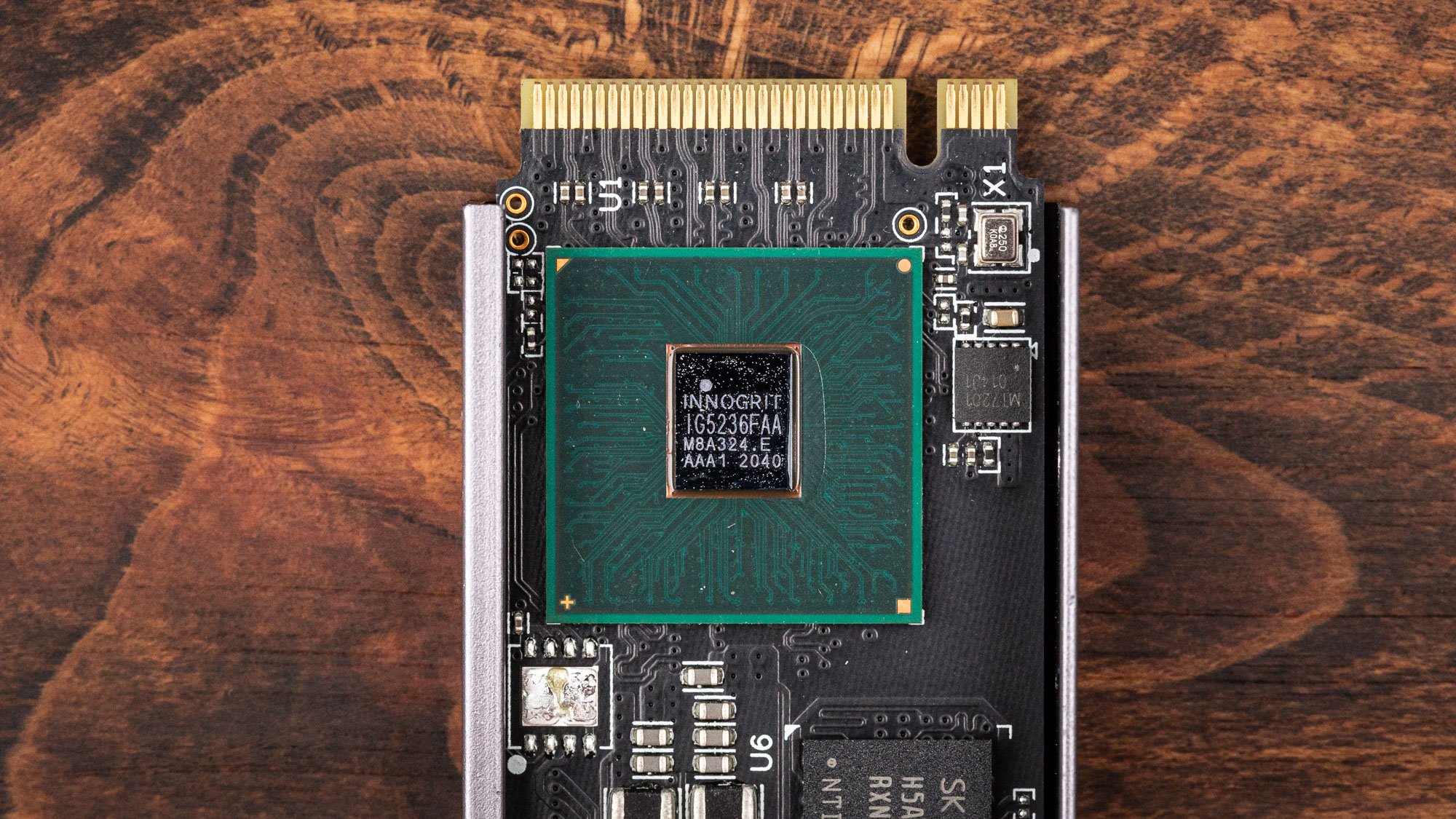Why you can trust Tom's Hardware
Comparison Products
Today, we threw Adata’s XPG Gammix S70 into battle against the best SSDs on the market. These include the Samsung 980 Pro, WD Black SN850, Sabrent Rocket 4 Plus, and the ultra-fast but recently discontinued Intel Optane SSD 905P. We also threw in the company’s Gammix S50 Lite, a Samsung 970 EVO Plus, and a Silicon Power US70 for good measure.
Game Scene Loading - Final Fantasy XIV
Final Fantasy XIV Shadowbringers is a free real-world game benchmark that easily and accurately compares game load times without the inaccuracy of using a stopwatch.
The XPG Gammix S70 performed well in the total game load time benchmark. The S70 is as fast as many of the best SSDs, with a total load time of roughly 10 seconds, but it’s not the fastest.
Transfer Rates – DiskBench
We use the DiskBench storage benchmarking tool to test file transfer performance with a custom dataset. We copy a 50GB dataset including 31,227 files of various types, like pictures, PDFs, and videos to a new folder and then follow-up with a reading test of a newly-written 6.5GB zip file.

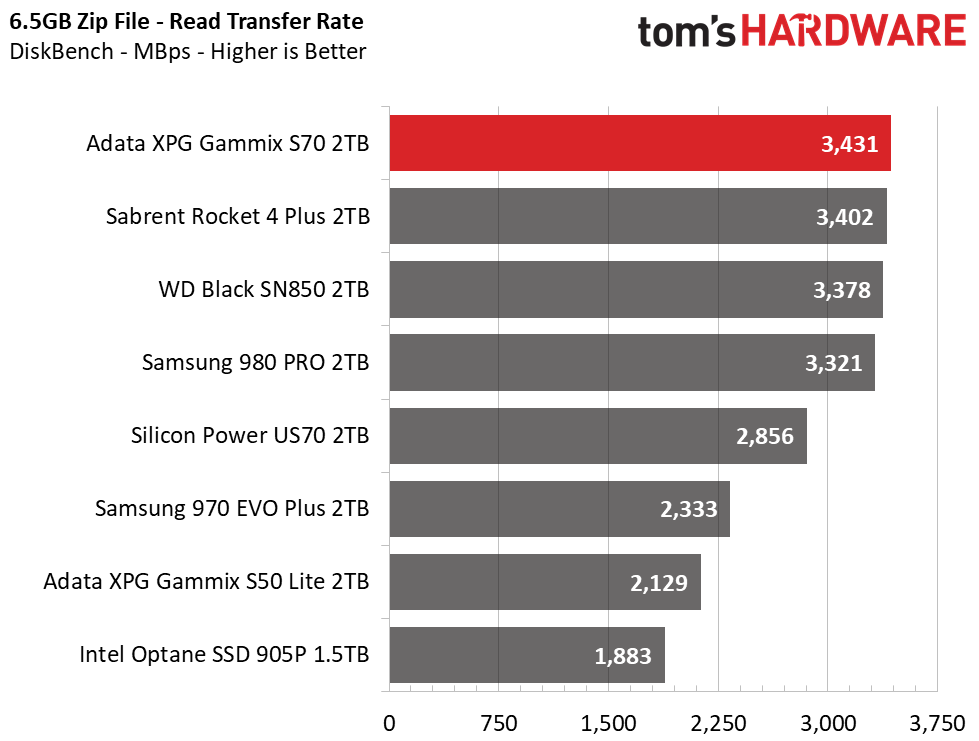
WD’s and Samsung’s top dogs score first and second place, respectively, during our file copy benchmark. Adata’s XPG Gammix S70 copied files at 1,062 MBps, which is respectable and outperforms the US70 but falls short of the Phison E18-powered Rocket 4 Plus. However, it took first place while reading back our large file, delivering faster read performance than any other SSD in the test pool.
Trace Testing – PCMark 10 Storage Test
PCMark 10 is a trace-based benchmark that uses a wide-ranging set of real-world traces from popular applications and everyday tasks to measure the performance of storage devices. The quick benchmark is more relatable to those who use their PCs for leisure or basic office work, while the full benchmark relates more to power users.

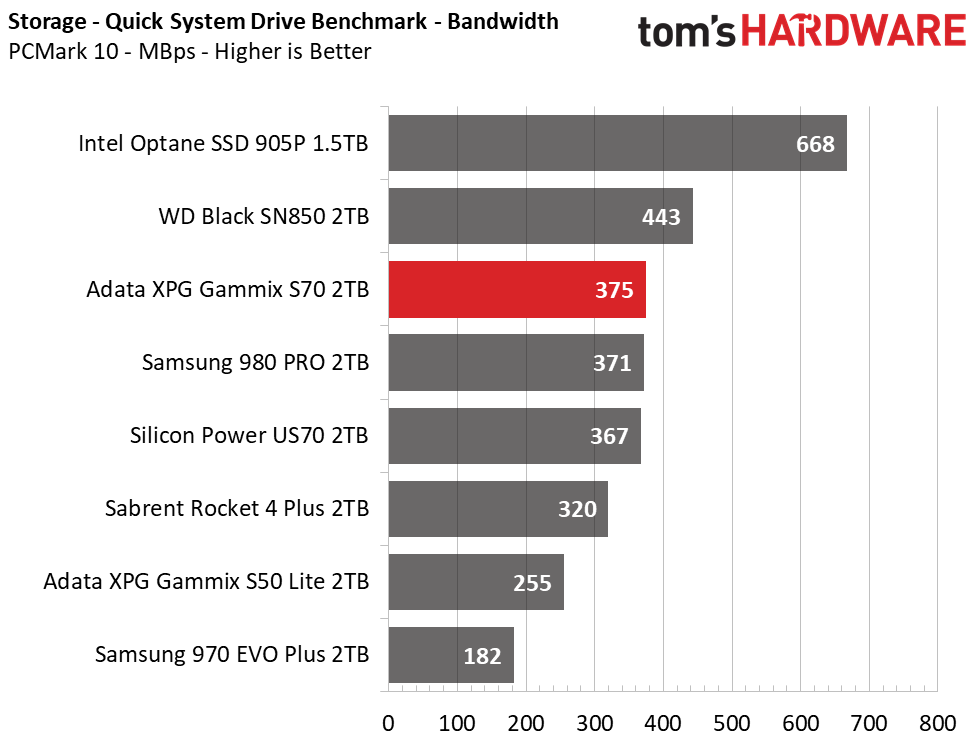
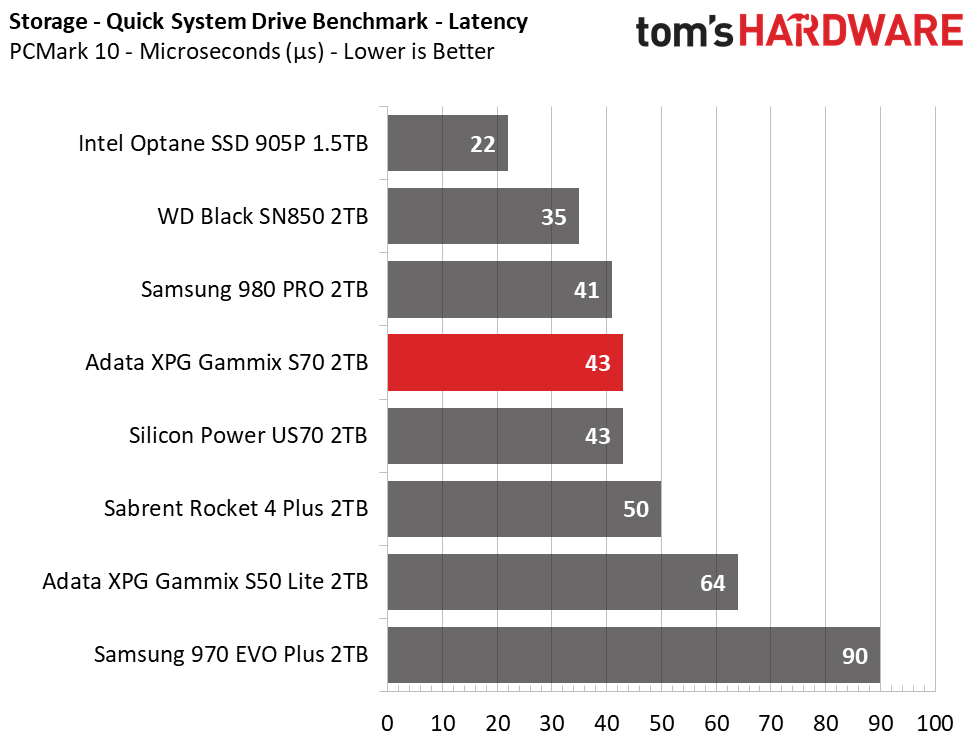


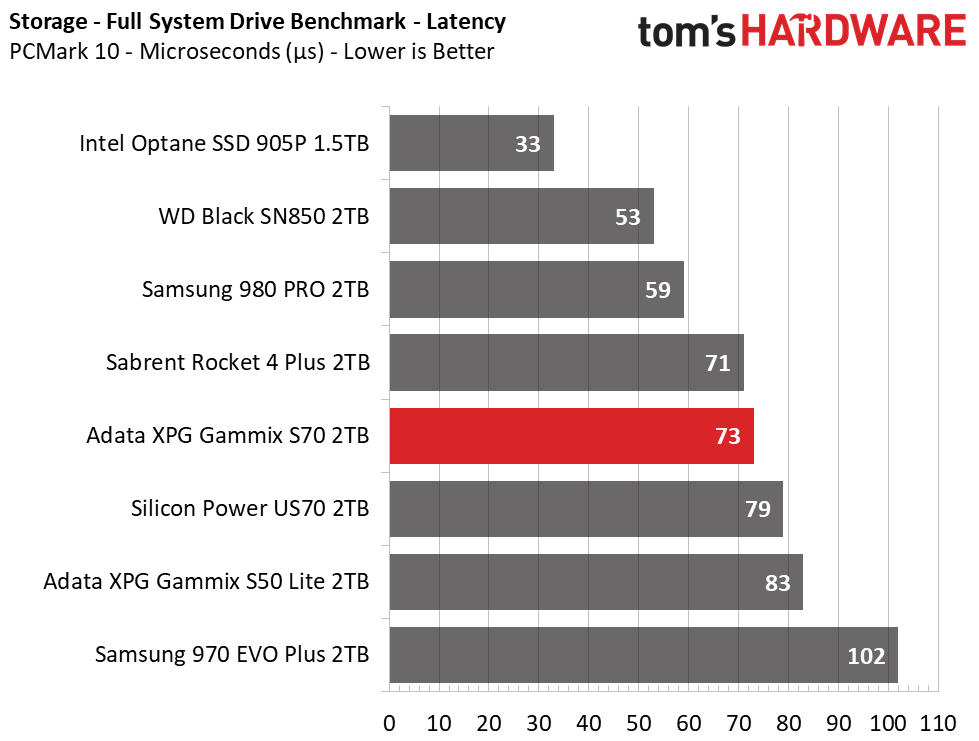
Adata’s S70 delivers responsive results during PCMark 10’s Quick and Full System Drive benchmarks, but it isn’t quite as fast as the best SSDs we’ve tested. The S70 trades blows with Samsung’s 980 Pro and proves faster than the Sabrent Rocket 4 Plus during the Quick workload, but falls short when tasked with the Full workload that hits the SSD with over 200GB of writes.
Get Tom's Hardware's best news and in-depth reviews, straight to your inbox.
Synthetic Testing - ATTO / iometer
iometer is an advanced and highly configurable storage benchmarking tool while ATTO is a simple and free application that SSD vendors commonly use to assign sequential performance specifications to their products. Both of these tools give us insight into how the device handles different file sizes.
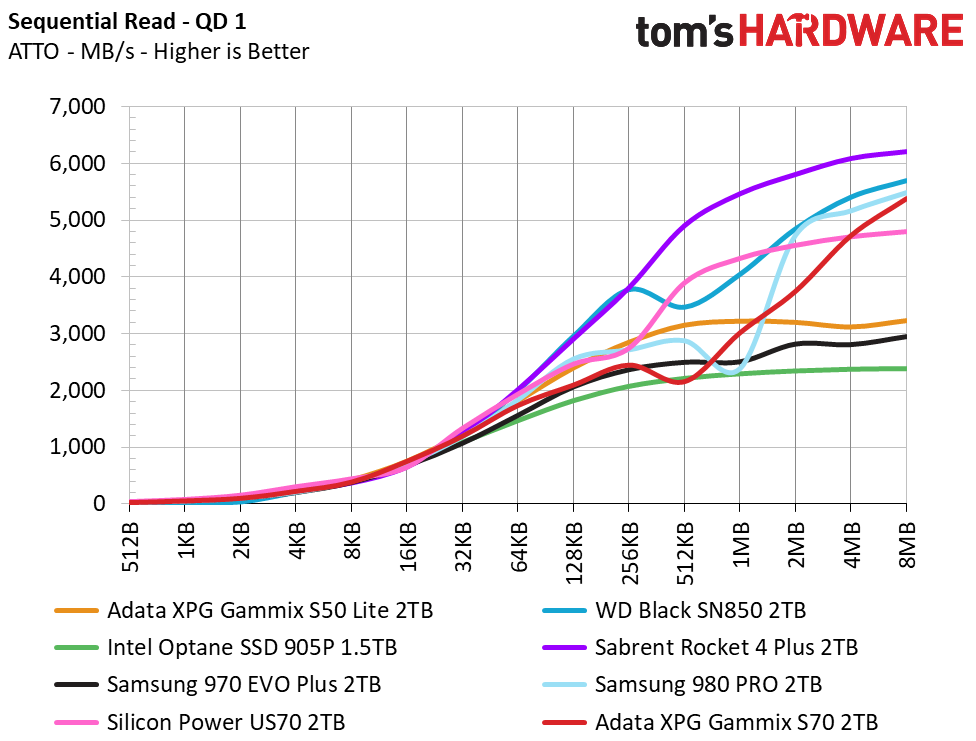

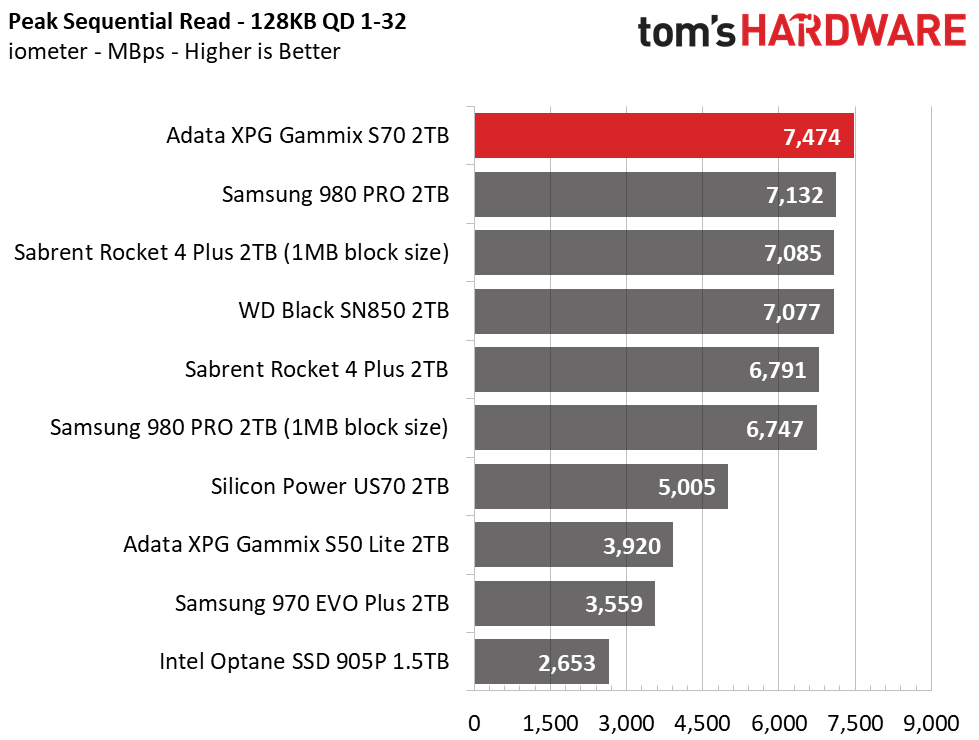
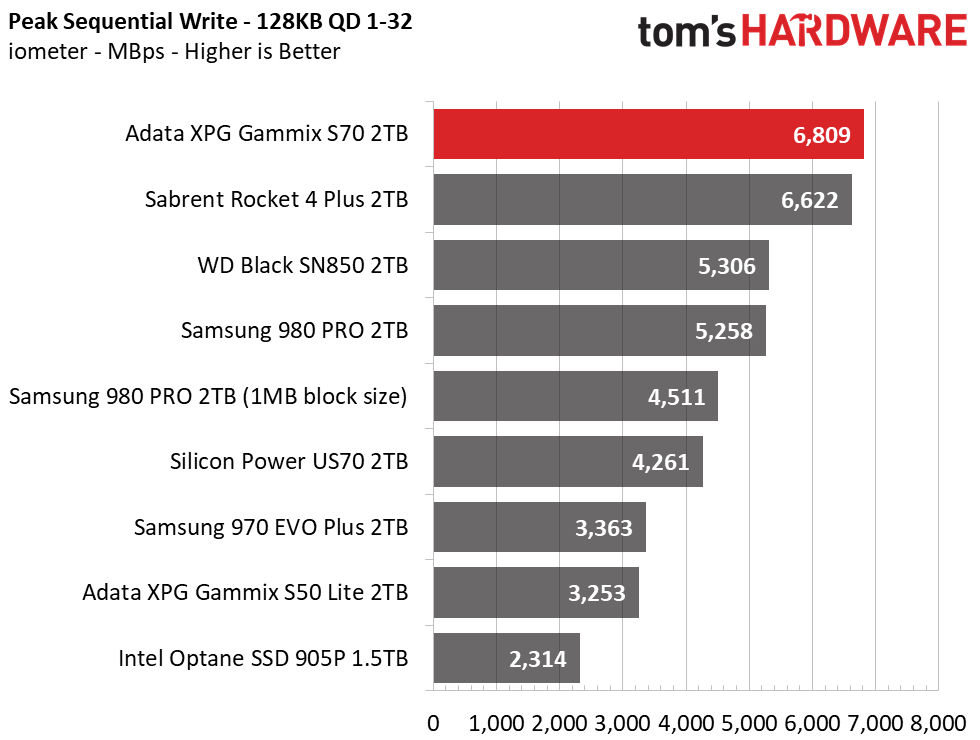
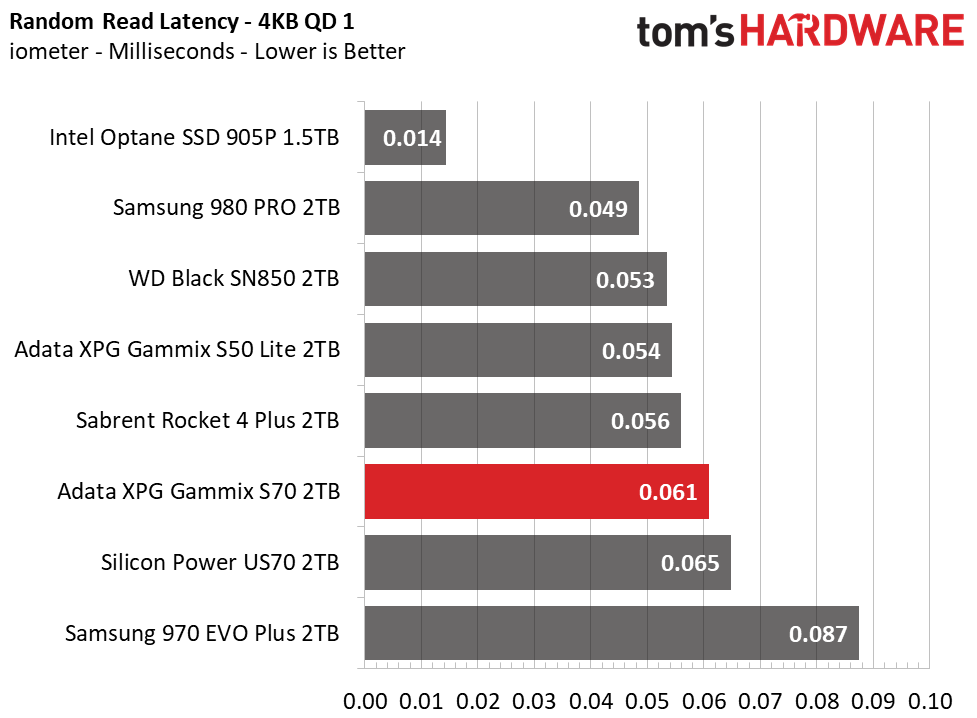
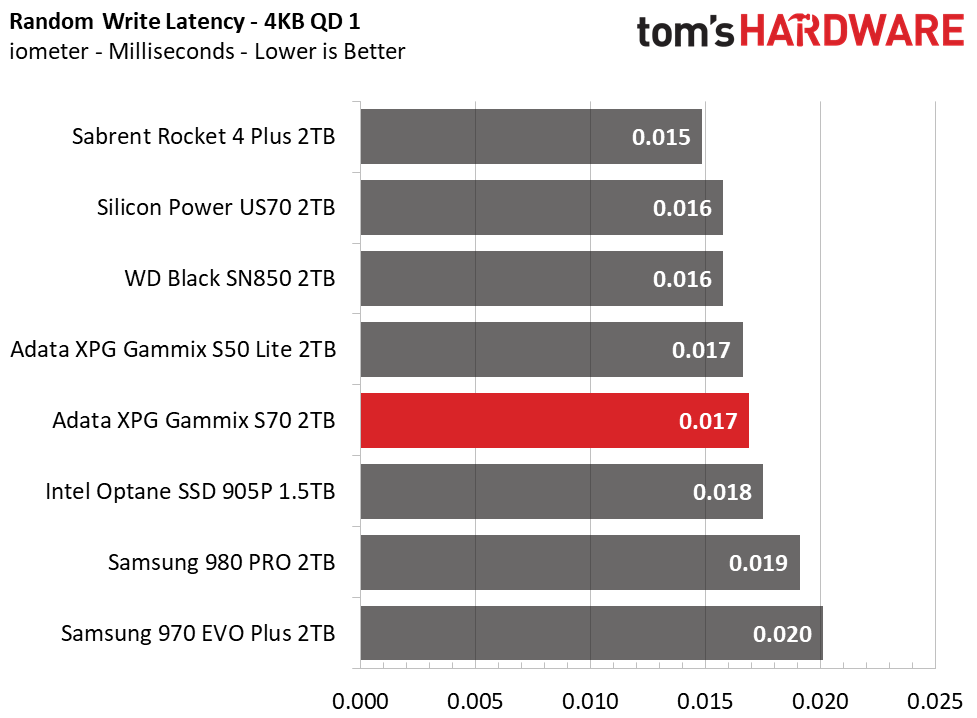
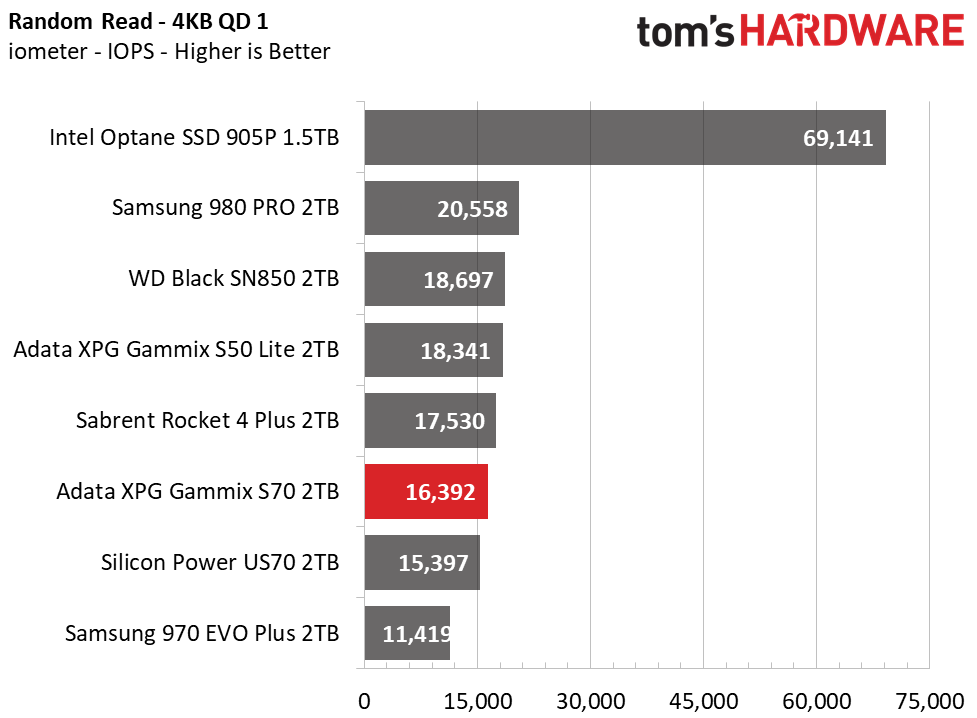


The S70 displays very strong sequential and random write performance and may peak with speeds of up to 7.5 / 6.8 GBps at high queue depths. However, the drive has slower than average small file read performance at lower queue depths (QDs), where it matters. This also affects the scaling of random read performance when the drive is under heavy load. Overall, the S70’s random read performance lags most PCIe Gen4 SSDs but is faster than most PCIe Gen3 SSDs.
Sustained Write Performance and Cache Recovery
Official write specifications are only part of the performance picture. Most SSDs implement a write cache, which is a fast area of (usually) pseudo-SLC programmed flash that absorbs incoming data. Sustained write speeds can suffer tremendously once the workload spills outside of the cache and into the "native" TLC or QLC flash. We use iometer to hammer the SSD with sequential writes for 15 minutes to measure both the size of the write cache and performance after the cache is saturated. We also monitor cache recovery via multiple idle rounds.
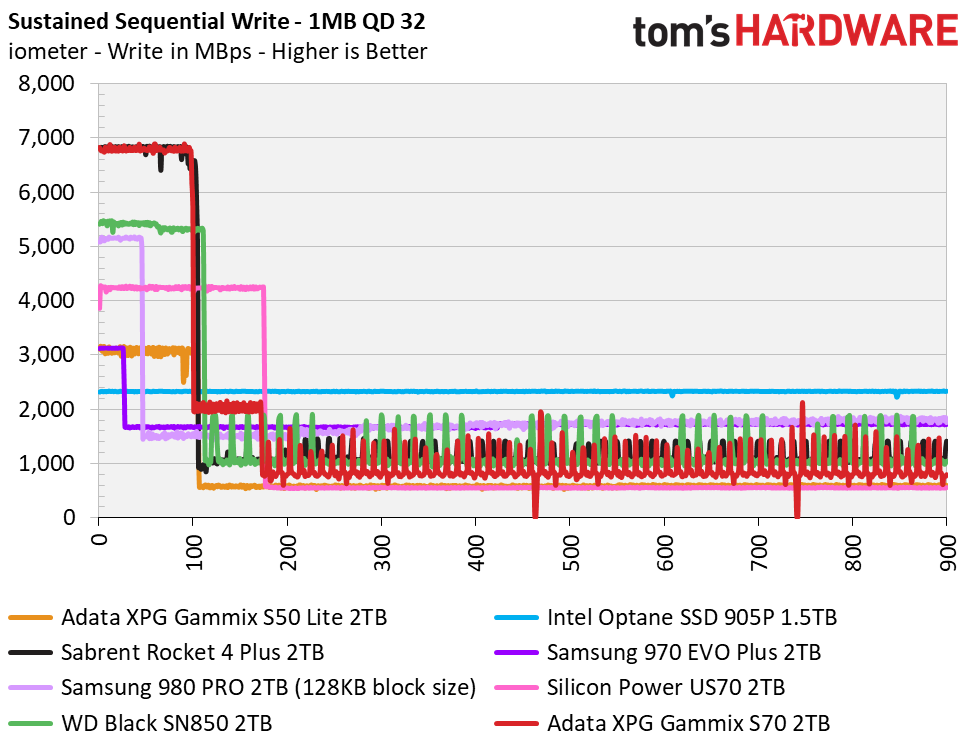
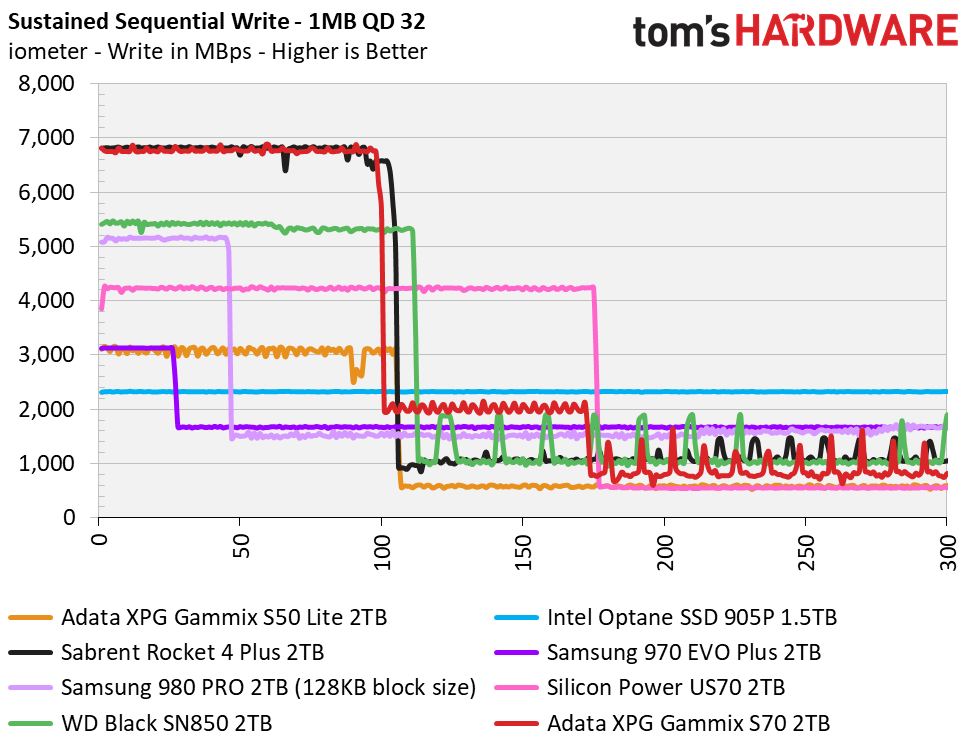
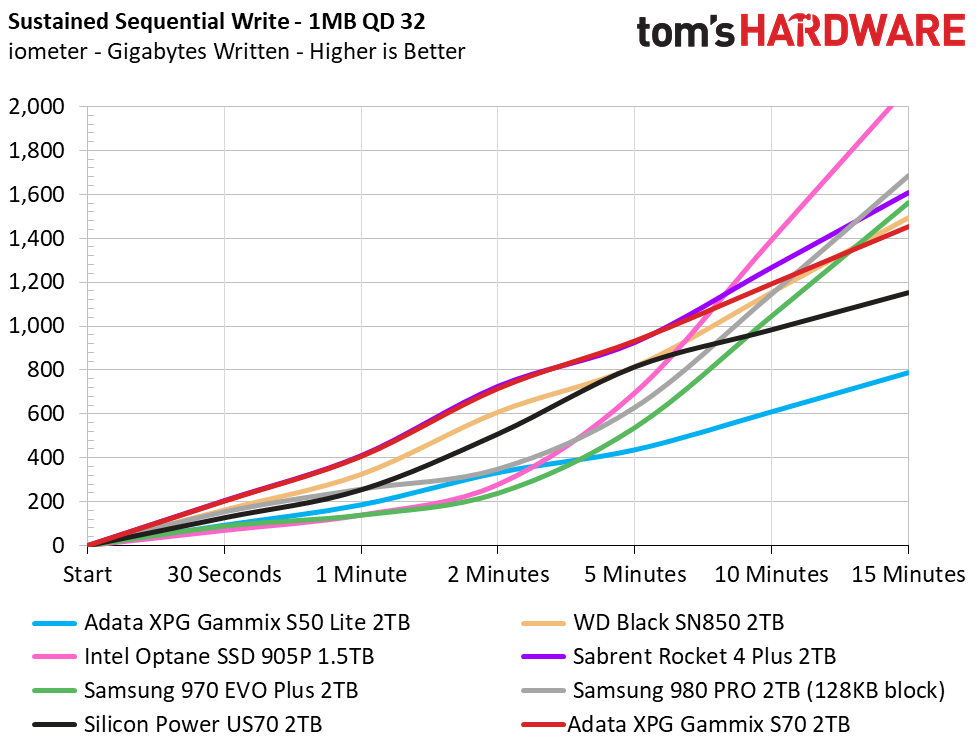
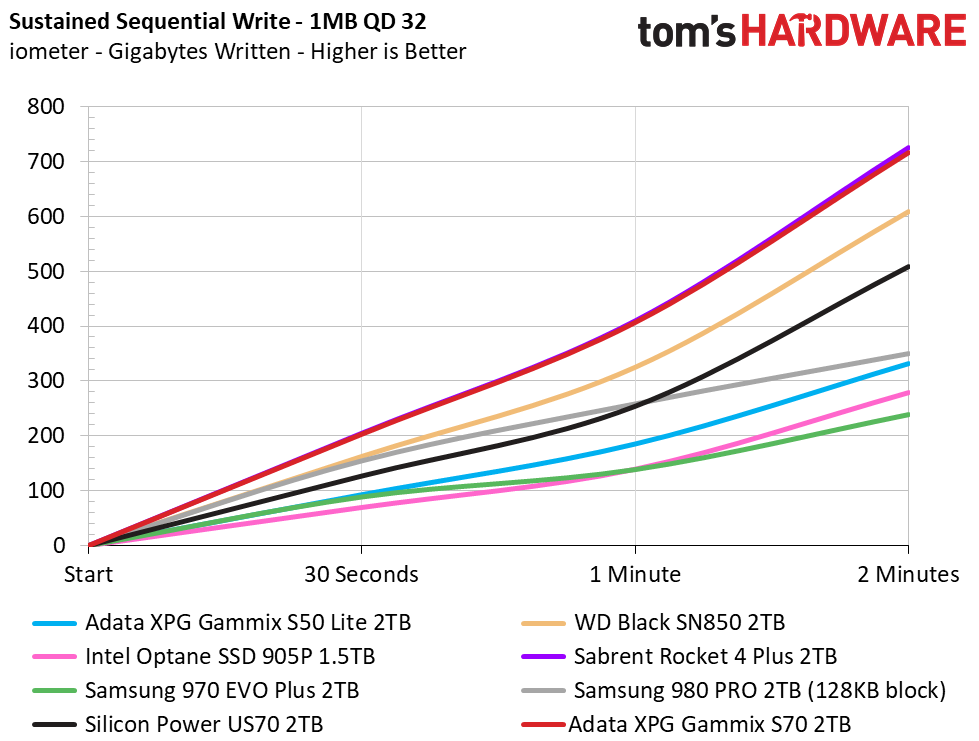
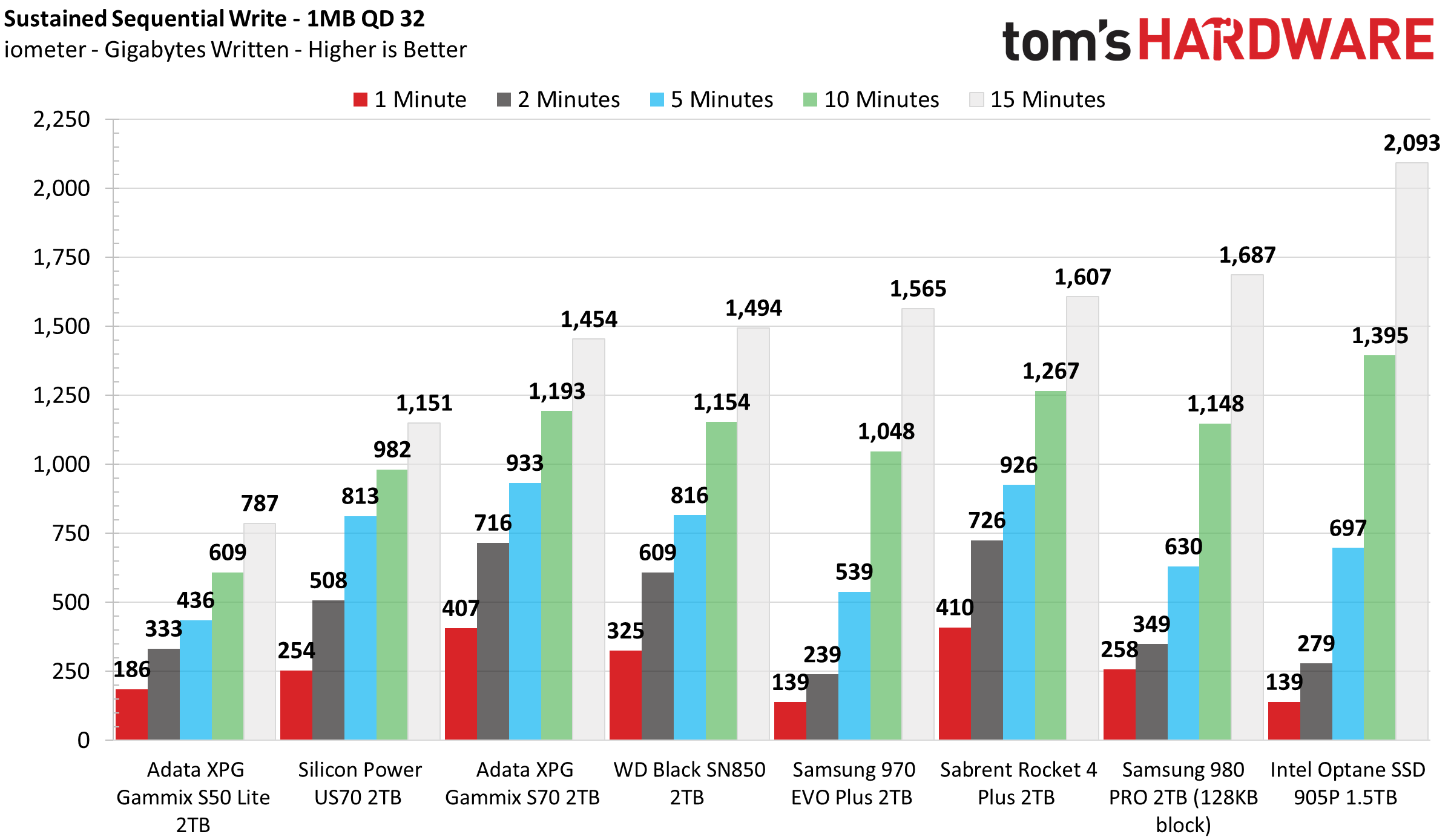
Adata’s S70 wrote 676GB of data before performance degraded from an average of 6.8 GBps down to 2 GBps. After writing an additional 146GB at 2GBps, performance degraded once more to an average speed of 870 MBps for the remainder of the test. The SSD also recovered its SLC cache very quickly — it recovered 333GB of the SLC cache after only a minute of idle time.
Power Consumption and Temperature
We use the Quarch HD Programmable Power Module to gain a deeper understanding of power characteristics. Idle power consumption is an important aspect to consider, especially if you're looking for a laptop upgrade. Some SSDs can consume watts of power at idle, while better-suited ones sip just milliwatts. Average workload power consumption and max consumption are two other aspects of power consumption, but performance-per-watt is more important. A drive might consume more power during any given workload, but accomplishing a task faster allows the drive to drop into an idle state more quickly, ultimately saving energy.
We also monitor the drive’s temperature via the S.M.A.R.T. data and an IR thermometer to see when (or if) thermal throttling kicks in and how it impacts performance. Bear in mind that results will vary based on the workload and ambient air temperature.

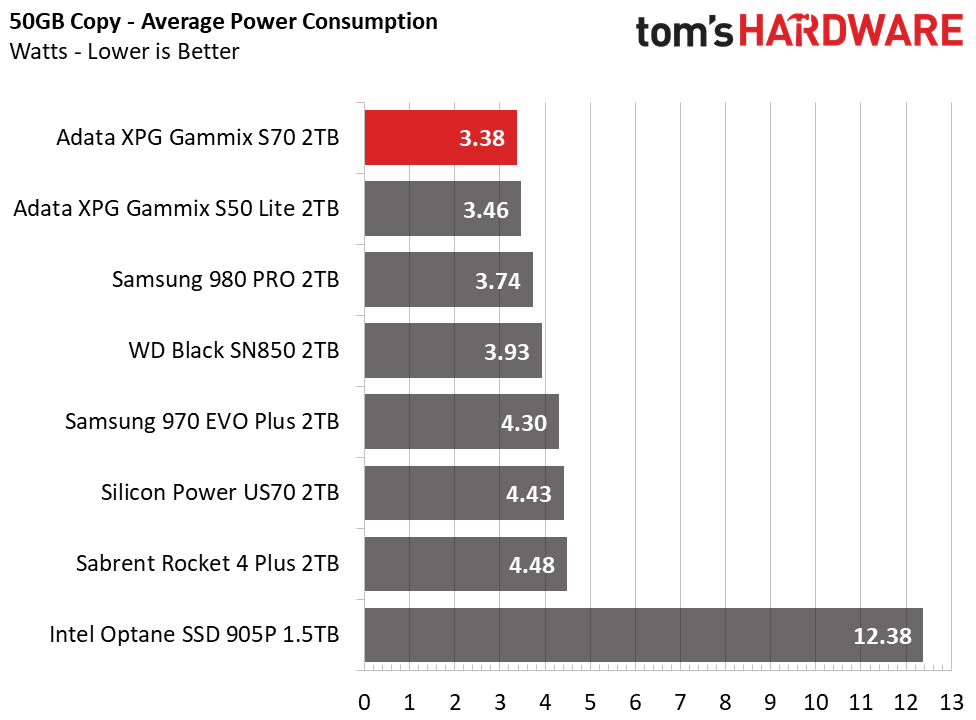

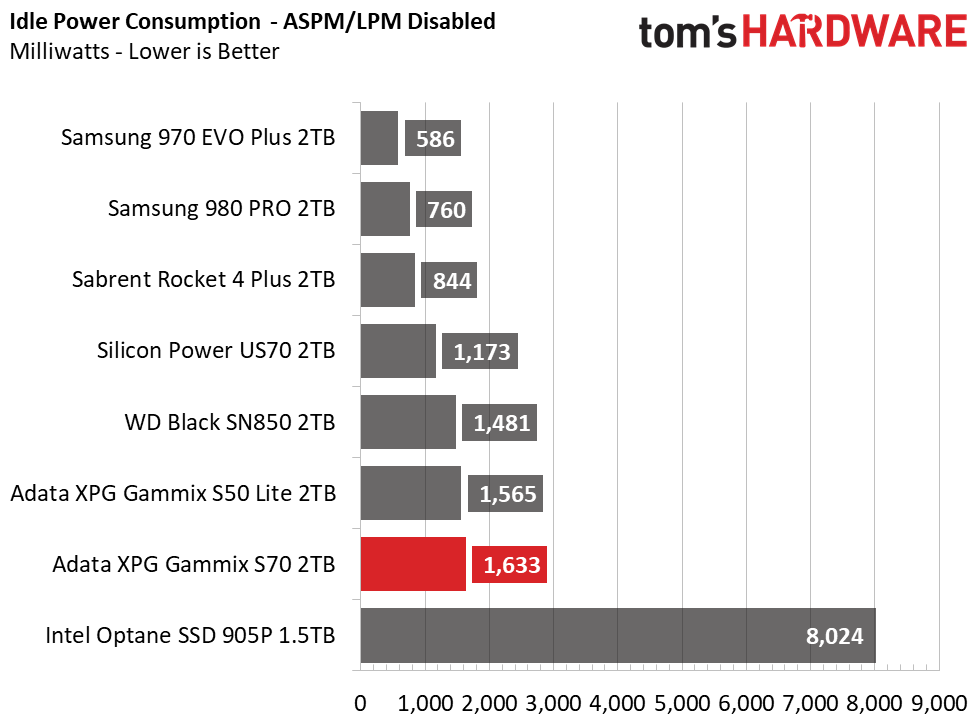
With a very low average power consumption result and impressive copy performance, Adata’s S70 makes for an efficient SSD under load, but it can still consume a lot of power. Peak power draw during the workload measured 8.63W, and it gulped down over 1.6W at idle. With that sort of power consumption, it outputs quite a bit of heat.
Fortunately, the large heatsink kept the drive cool when transferring around a few hundred GB of data. Without any airflow, the SSD could fully saturate its cache without thermal throttling. After sustaining roughly 400GB of writes and reading back a few hundred gigabytes of those files, peak temperatures of 69-71 degrees Celsius were reported by S.M.A.R.T. data, while our IR thermometer measured peak temperatures of 56C on the heatsink.
Conclusion
We have to give credit to Adata for its continued support of smaller and newer SSD controller manufacturers — the company has designed and produced numerous SSDs by working with multiple controller vendors. Over the years, this type of resource management has spawned a lot of interesting and performant SSDs.
Adata has also confirmed that this drive will feature a fixed build of materials, so the components, like the NAND and SSD controller, will remain the same throughout the life cycle of the S70.
The Gammix S70 is Adata’s fastest NVMe SSD, which comes courtesy of InnoGrit’s leading-edge Rainier controller. It offers up higher endurance than most TLC SSDs and even comes with AES 256-bit encryption support, a black PCB, and a heatsink. But while it is quite fast, the SSD’s firmware’s performance tuning is still a bit behind the best. We have tested three firmware revisions since receiving our review sample this year, and while this SSD has the potential to be the fastest on the market, it isn’t quite there yet.
If you’re just looking for the best response times, our recommendation still leans towards the WD Black SN850 or Samsung 980 Pro. If you are set on getting a PCIe Gen4 SSD with a heatsink, Corsair’s MP600 Pro offers a slimmer and more flexible design but is also more pricey. If the S70’s price bridged the gap between the S50 Lite and the WD Black SN850 or Samsung 980 Pro, then we feel it would be in a much better position.
While not a bad choice per se, its pricing, which is above both the Samsung 980 Pro and WD Black SN850 at 2TB by $20-$30 (and similarly at 1TB), along with potential issues due to the size of the heatsink, makes it hard to recommend the S70 over the competition. Additionally, Samsung and WD have much better software support that enables even faster performance with a flick of a switch.
MORE: Best SSDs
MORE: How We Test HDDs And SSDs
MORE: All SSD Content

Sean is a Contributing Editor at Tom’s Hardware US, covering storage hardware.
-
Makaveli I like the the size of the SLC cache on this drive.Reply
However the controller swapping shenanigans they were doing on their previous drives have written off any Adata products for me.

